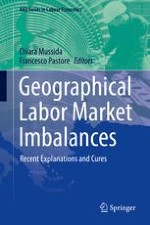2015 | OriginalPaper | Buchkapitel
10. Explaining the Patenting Propensity: A Regional Analysis Using EPO-OECD Data
verfasst von : Claudio Cozza, Francesco Schettino
Erschienen in: Geographical Labor Market Imbalances
Verlag: Springer Berlin Heidelberg
Aktivieren Sie unsere intelligente Suche, um passende Fachinhalte oder Patente zu finden.
Wählen Sie Textabschnitte aus um mit Künstlicher Intelligenz passenden Patente zu finden. powered by
Markieren Sie Textabschnitte, um KI-gestützt weitere passende Inhalte zu finden. powered by
